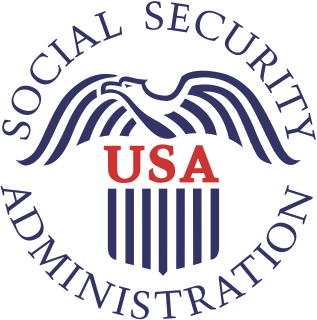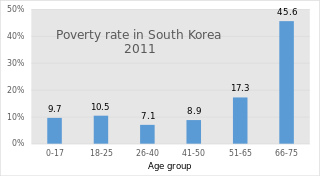Related Research Articles

Social security is "any government system that provides monetary assistance to people with an inadequate or no income". In the United States, this is usually called welfare or a social safety net, especially when talking about Canada and European countries.

Welfare is a type of government support for the citizens of that society. Welfare may be provided to people of any income level, as with social security, but it is usually intended to ensure that people can meet their basic human needs such as food and shelter. Welfare attempts to provide a minimal level of well-being, usually either a free- or a subsidized-supply of certain goods and social services, such as healthcare, education, and vocational training.
Welfare reforms are changes in the operation of a given welfare system, with the goals of reducing the number of individuals dependent on government assistance, keeping the welfare systems affordable, and assisting recipients to become self-sufficient. Classical liberals and conservatives generally argue that welfare and other tax-funded services reduce incentives to work, exacerbate the free-rider problem, and intensify poverty. On the other hand, socialists generally criticize welfare reform because it usually minimizes the public safety net and strengthens the capitalist economic system. Welfare reform is constantly debated because of the varying opinions on the government's determined balance of providing guaranteed welfare benefits and promoting self-sufficiency.
Guaranteed minimum income (GMI), also called minimum income, is a system of social welfare provision that guarantees that all citizens or families have an income sufficient to live on, provided they meet certain conditions. Eligibility is typically determined by the following: citizenship, a means test, and either availability for the labor market or a willingness to perform community services. The primary goal of a guaranteed minimum income is to reduce poverty. If citizenship is the only requirement, the system turns into a universal basic income.
A means test is a determination of whether an individual or family is eligible for government assistance or welfare, based upon whether the individual or family possesses the means to do without that help.

Temporary Assistance for Needy Families is a federal assistance program of the United States. It began on July 1, 1997, and succeeded the Aid to Families with Dependent Children (AFDC) program, providing cash assistance to indigent American families through the United States Department of Health and Human Services. TANF is often simply referred to simply as welfare.

Bolsa Família is a social welfare program of the Government of Brazil, part of the Fome Zero network of federal assistance programs. Bolsa Família provides financial aid to poor Brazilian families; and if they have children, families must ensure that the children attend school and are vaccinated. If they exceed the total of permitted school absences, they are dropped from the program and their funds are suspended. The program attempts to both reduce short-term poverty by direct cash transfers and fight long-term poverty by increasing human capital among the poor through conditional cash transfers. It also works to give free education to children who cannot afford to go to school to show the importance of education.
Despite being a developed country, those who are living at the lower end of the income distribution in the United Kingdom have a relatively low standard of living. Data based on incomes published in 2016 by Department for Work and Pensions (DWP) show that, after housing costs have been taken into consideration, the number of people living in the UK in relative poverty to be 13.44m. In 2015, a report by Institute for Fiscal Studies reported that 21.6% of Britons were now in relative poverty. The report showed that there had been a fall in poverty in the first few years of the twenty-first century, but the rate of poverty had remained broadly flat since 2004/5.
Conditional cash transfer (CCT) programs aim to reduce poverty by making welfare programs conditional upon the receivers' actions. The government only transfers the money to persons who meet certain criteria. These criteria may include enrolling children into public schools, getting regular check-ups at the doctor's office, receiving vaccinations, or the like. CCTs seek to help the current generation in poverty, as well as breaking the cycle of poverty for the next through the development of human capital. Conditional cash transfers could help reduce feminization of poverty.
Oportunidades is a government social assistance program in Mexico founded in 2002, based on a previous program called Progresa, created in 1997. It is designed to target poverty by providing cash payments to families in exchange for regular school attendance, health clinic visits, and nutrition support. Oportunidades is credited with decreasing poverty and improving health and educational attainment in regions where it has been deployed. Key features of Oportunidades include:
Social programs in Canada include all government programs designed to give assistance to citizens outside what the market provides. The Canadian social safety net covers a broad spectrum of programs, many of which are run by the provinces. Canada has a wide range of government transfer payments to individuals, which totaled $176.6 billion in 2009. Only social programs that direct funds to individuals are included in that cost; programs such as medicare and public education are additional costs.

Social programs in the United States are welfare programs designed to ensure that the basic needs of the American population are met. Federal and state welfare programs include cash assistance, healthcare and medical provisions, food assistance, housing subsidies, energy and utilities subsidies, education and childcare assistance, and subsidies and assistance for other basic services. Similar social welfare benefits are sometimes provided by the private sector either through policy mandates or on a voluntary basis. Employer-sponsored health insurance is an example of this.

The National Social Assistance Programme (NSAP) is a Centrally Sponsored Scheme of the Government of India that provides financial assistance to the elderly, widows and persons with disabilities in the form of social pensions.
A social experiment is a kind of psychological or sociological research for testing a people’s reaction to certain situations or events. The experiment relies on a particular social approach, when a main source of information is people with their own knowledge and point of view. To carry out a social experiment, specialists usually divide participants into two groups — active participants and respondents. Throughout the period of experiment, participants are monitored by specialists to identify the effects and differences as a result of the experiment.

Pantawid Pamilyang Pilipino Program, also known as 4Ps and formerly bangon Pamilyang Pilipino, is a conditional cash transfer program of the Philippine government under the Department of Social Welfare and Development. It aims to eradicate extreme poverty in the Philippines by investing in health and education particularly in ages 0–14. It is patterned on programs in other developing countries like Brazil and Mexico (Oportunidades). The 4Ps program now operates in 17 regions, 79 provinces and 1,484 municipalities and 143 key cities covering 4,090,667 household beneficiaries as of 25 June 2014.
Welfare in California consists of federal welfare programs—which are often at least partially administered by state and county agencies—and several independent programs, which are usually administered by the counties.
The Pension Program for the Elderly (PPE) is a safety net, noncontributory pension program administered by the federal Ministry of Social Development (SEDESOL) in Mexico. The program aims to expand the schemes of universal social security, by providing financial support and social protection to people 65 or older who a) do not benefit from retirement or contributory pension plans or b) receive income from retirement plans or contributory pension programs that does not exceed a certain amount determined by SEDESOL.
Gisela Juliana Lara Saldaña is a Mexican politician that has held diverse positions in Mexico, actively. She is the National holder of the IMSS-BIENESTAR Program.

South Korea's pension scheme was introduced relatively recently, compared to other democratic nations. Half of the country's population aged 65 and over lives in relative poverty, or nearly four times the 13% average for member countries of the Organisation for Economic Co-operation and Development (OECD). This makes old age poverty an urgent social problem. Public social spending by general government is half the OECD average, and is the lowest as a percentage of GDP among OECD member countries.
Welfare in Peru began on a base of democratic views. Its political system is a multi-party system that includes having a President and Prime Minister. The economy of Peru has expanded substantially throughout the years making it one of the fastest growing economies. As described by Gøsta Esping-Andersen, in his book The Three Worlds of Welfare Capitalism, the Peruvian welfare system would most commonly fit in with the liberal model, since Peru mostly attempts to emancipate the less fortunate from poverty, through means of state-cultivated programs. In accordance, the welfare system has shown great expansion, with the focus primarily on education, healthcare, and the creation of a social safety net.
References
- ↑ "BBC News - CROSSING CONTINENTS - Mexico's welfare revolution". news.bbc.co.uk. Retrieved 13 January 2018.
- ↑ "Mexican government says poverty rate rose to 46.2 percent in 2014". Reuters. 2015-07-23. Retrieved 2017-12-09.
- ↑ "Poverty in Mexico: Economic Crises & 21st Century Welfare". www.poverties.org. Retrieved 2017-12-09.
- 1 2 3 "A Model from Mexico for the World". World Bank. Retrieved 2017-12-09.
- 1 2 "Programa de Inclusión Social PROSPERA | Gobierno | gob.mx". www.gob.mx (in Spanish). Retrieved 2017-12-09.
- 1 2 Craig, Gundersen; Mara, Yanez; Constanza, Valdes; A., Kuhn, Betsey. "A COMPARISON OF FOOD ASSISTANCE PROGRAMS IN MEXICO AND THE UNITED STATES".Cite journal requires
|journal=(help) - ↑ h[ttp://www.2006-2012.economia.gob.mx/comunidad-negocios/competitividad/una-sola-economia/programas-una-sola-economia/una-economia-mi-tortilla][ dead link ]
- ↑ "In Mexico, welfare programs for children, fall short - The Daily Texan". www.dailytexanonline.com. Retrieved 2017-12-09.
- 1 2 3 4 "Shanghai Poverty Conference" (PDF). World Bank.
- ↑ Giménez, Víctor; Ayvar-Campos, Francisco Javier; Navarro-Chávez, José César Lenin (2017-06-01). "Efficiency in the generation of social welfare in Mexico: A proposal in the presence of bad outputs". Omega. 69: 43–52. doi:10.1016/j.omega.2016.08.001. ISSN 0305-0483.
- 1 2 "Social Security Programs Throughout the World: The Americas, 2013 - Mexico". www.ssa.gov. Retrieved 2017-12-09.
- ↑ "Mexico rebrands flagship social welfare programme in bid to help working poor". Eye On Latin America. 26 September 2014. Retrieved 25 January 2018.